The body is a complex and remarkable machine, and the dynamic process of wound healing is a great example of how our body’s different systems, along with the proper wound care products, work together to repair and replace devitalized tissues. But how, exactly, does our body heal?
When the skin is injured, our body sets into motion an automatic series of events, often referred to as the “cascade of healing,” in order to repair the injured tissues. The cascade of healing is divided into these four overlapping phases: Hemostasis, Inflammatory, Proliferative, and Maturation.
Phase 1: Hemostasis Phase
Hemostasis, the first phase of healing, begins at the onset of injury, and the objective is to stop the bleeding. In this phase, the body activates its emergency repair system, the blood clotting system, and forms a dam to block the drainage. During this process, platelets come into contact with collagen, resulting in activation and aggregation. An enzyme called thrombin is at the center, and it initiates the formation of a fibrin mesh, which strengthens the platelet clumps into a stable clot.
Phase 2: Defensive/Inflammatory Phase
If Phase 1 is primarily about coagulation, the second phase, called the Defensive/Inflammatory Phase, focuses on destroying bacteria and removing debris—essentially preparing the wound bed for the growth of new tissue.
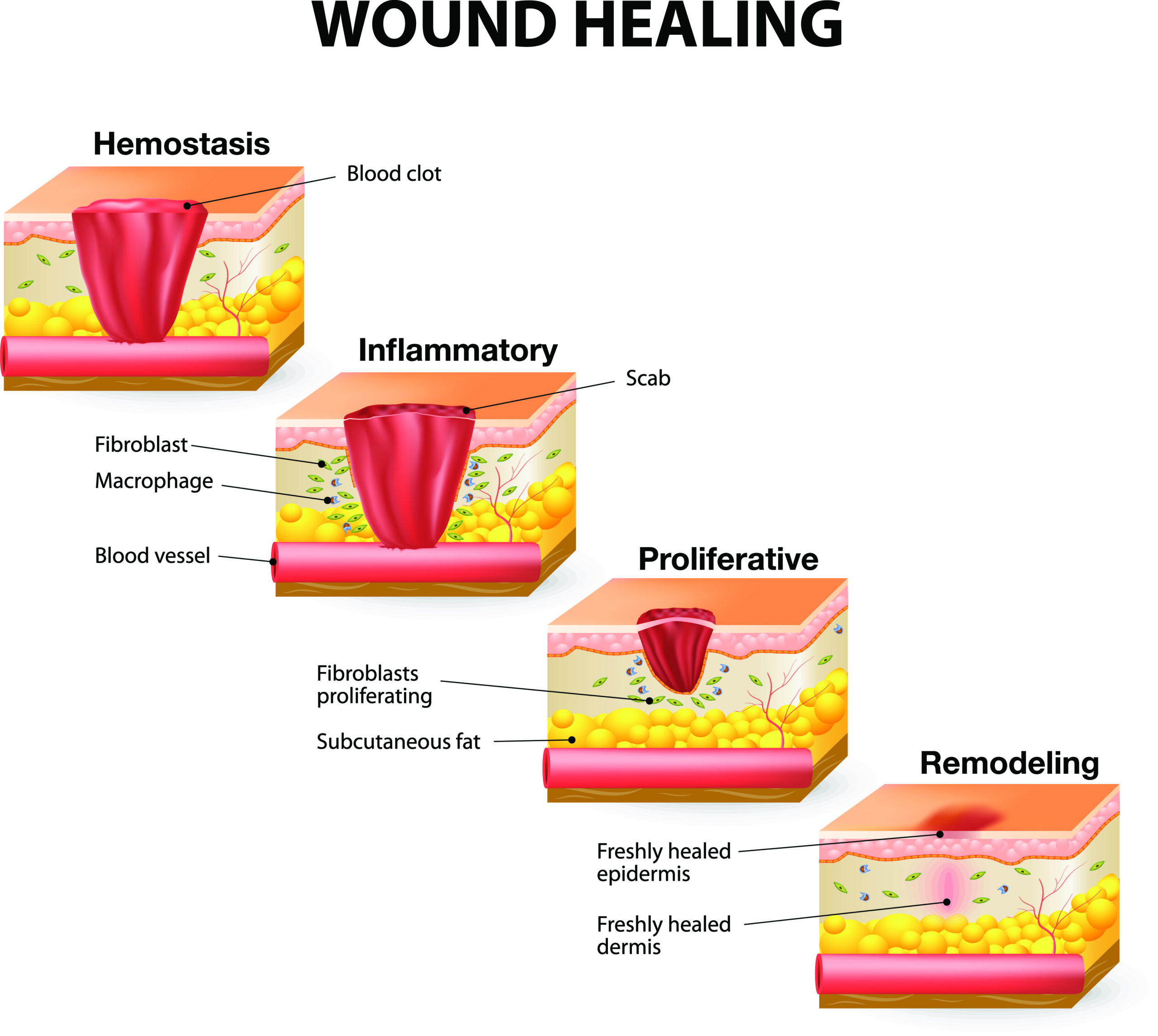
During Phase 2, a type of white blood cells called neutrophils enter the wound to destroy bacteria and remove debris. These cells often reach their peak population between 24 and 48 hours after injury, reducing greatly in number after three days. As the white blood cells leave, specialized cells called macrophages arrive to continue clearing debris. These cells also secrete growth factors and proteins that attract immune system cells to the wound to facilitate tissue repair. This phase often lasts four to six days and is often associated with edema, erythema (reddening of the skin), heat and pain.
Phase 3: Proliferative Phase
Once the wound is cleaned out, the wound enters Phase 3, the Proliferative Phase, where the focus is to fill and cover the wound.
The Proliferative phase features three distinct stages: 1) filling the wound; 2) contraction of the wound margins; and 3) covering the wound (epithelialization).
During the first stage, shiny, deep red granulation tissue fills the wound bed with connective tissue, and new blood vessels are formed. During contraction, the wound margins contract and pull toward the center of the wound. In the third stage, epithelial cells arise from the wound bed or margins and begin to migrate across the wound bed in leapfrog fashion until the wound is covered with epithelium. The Proliferative phase often lasts anywhere from four to 24 days.
Phase 4: Maturation Phase
During the Maturation phase, the new tissue slowly gains strength and flexibility. Here, collagen fibers reorganize, the tissue remodels and matures and there is an overall increase in tensile strength (though maximum strength is limited to 80% of the pre-injured strength). The Maturation phase varies greatly from wound to wound, often lasting anywhere from 21 days to two years.
The healing process is remarkable and complex, and it is also susceptible to interruption due to local and systemic factors, including moisture, infection, and maceration (local); and age, nutritional status, body type (systemic). When the right healing environment is established, the body works in wondrous ways to heal and replace devitalized tissue.
—
With reporting by Chad Collins
For more information, see related articles and resources here:
- Introducing Our New Wound Management Guide
- 5 Lifestyle Factors That Affect Wound Healing
- Top 5 Nutrients for Wound Healing
- What is Hyperbaric Oxygen Therapy?
- Webinar Video: Is It Infected? How Do I Really Know?






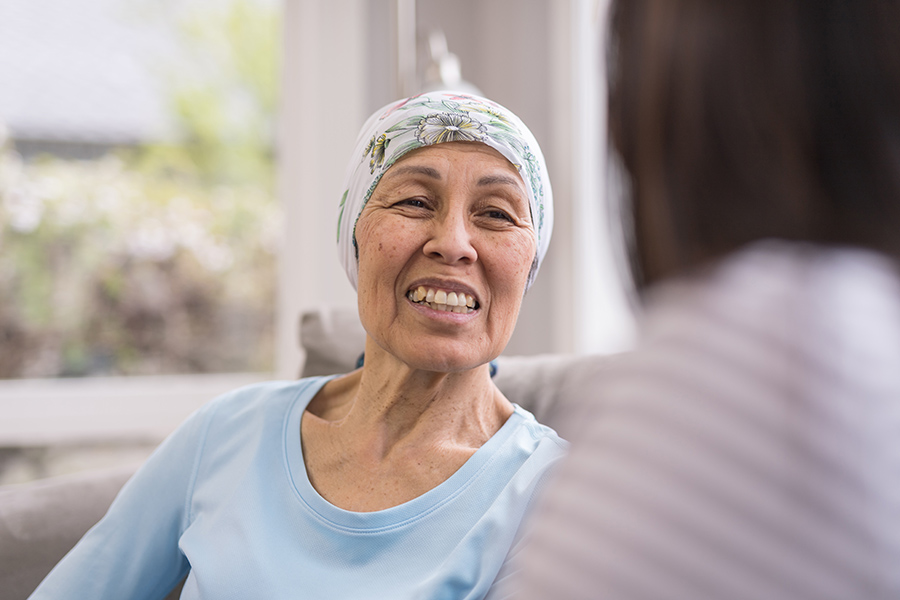


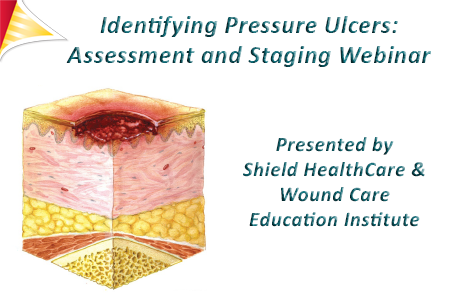
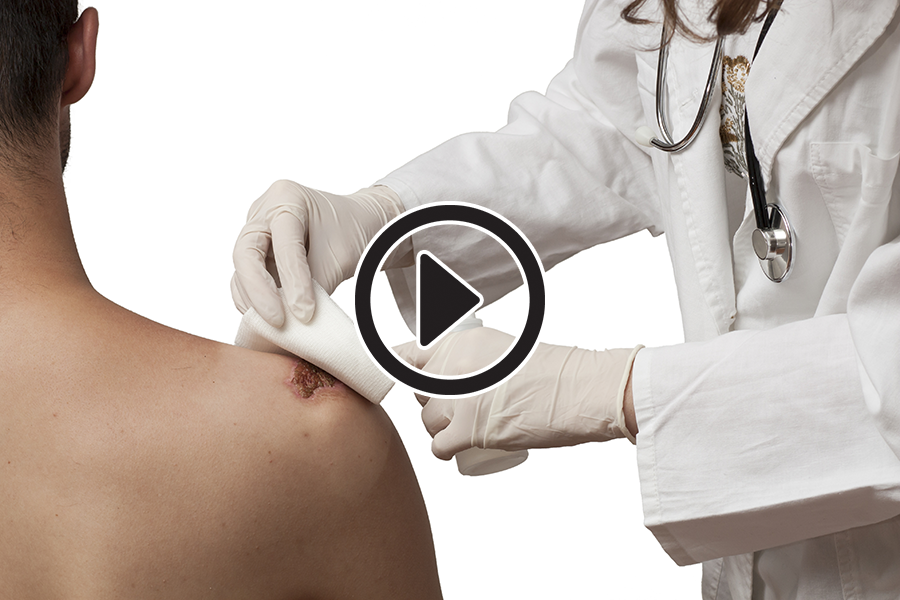
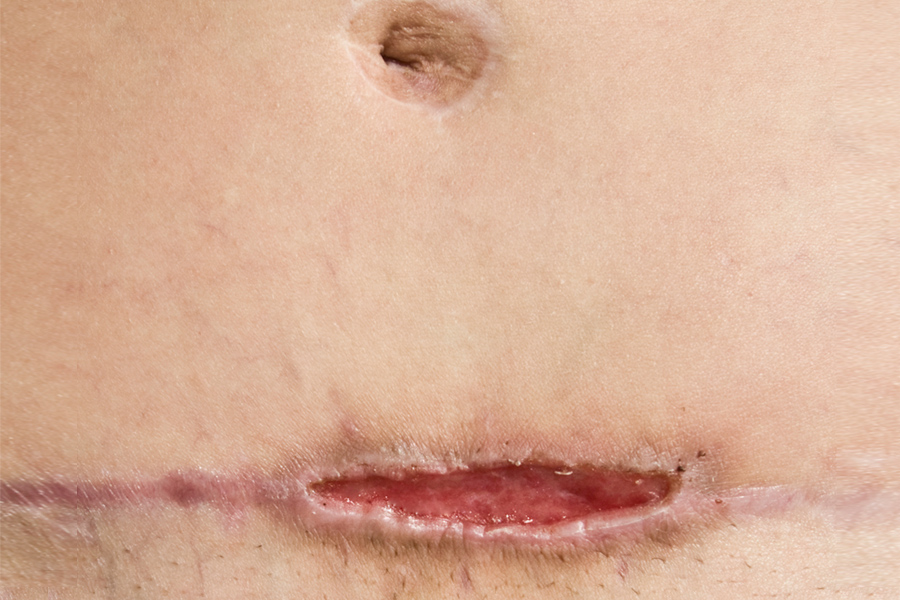

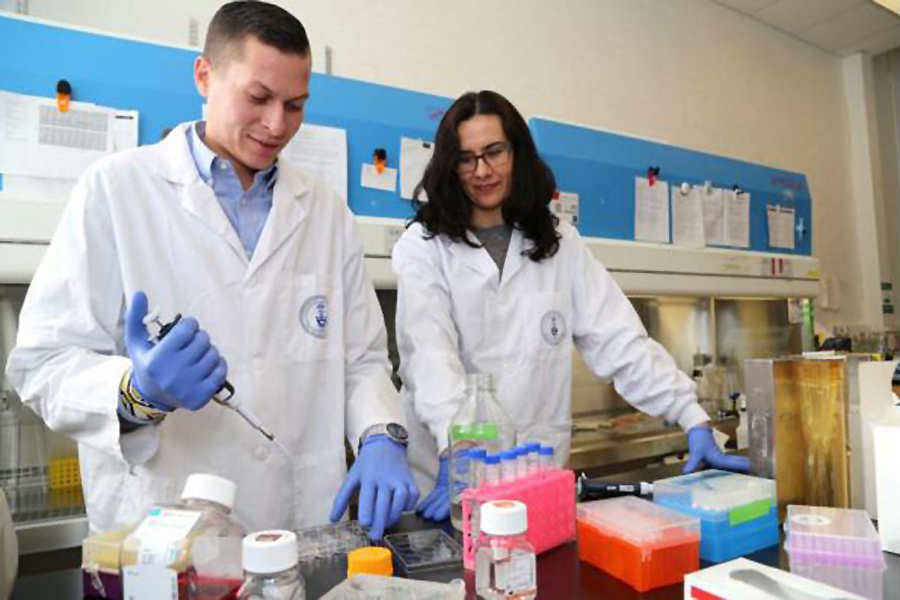
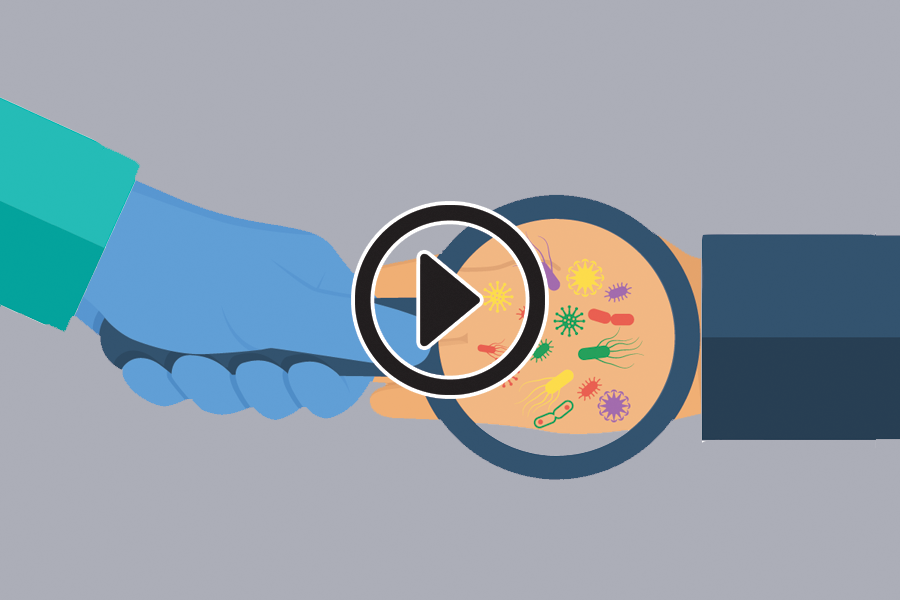
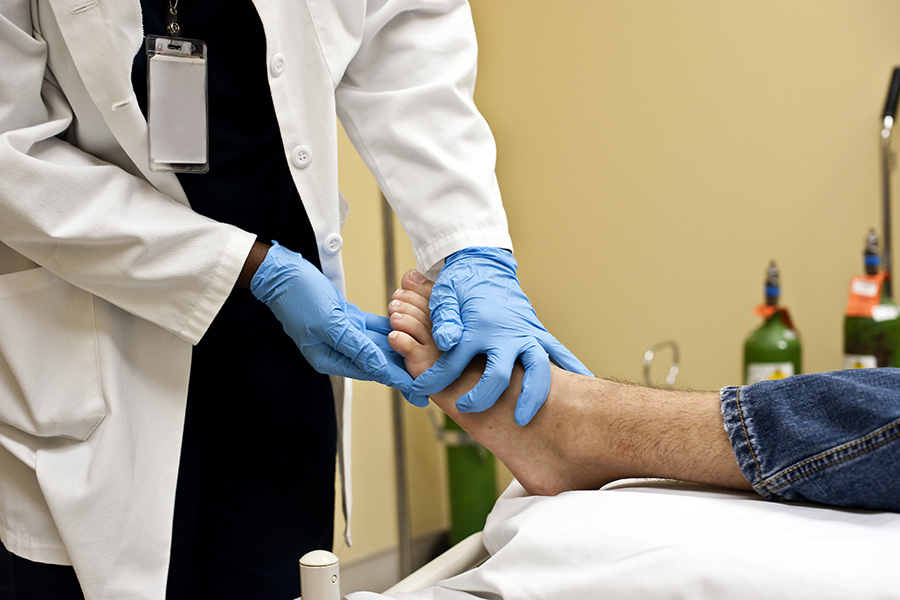
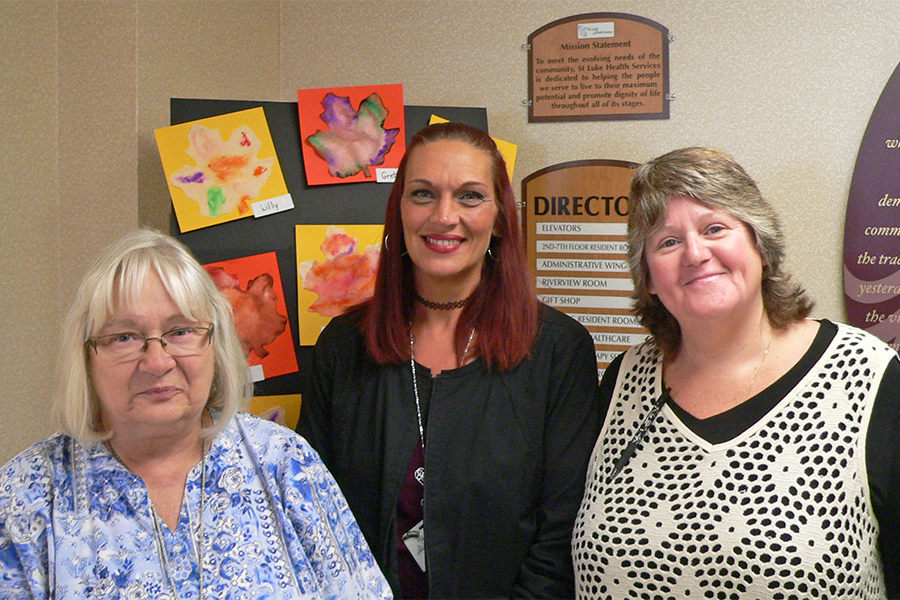
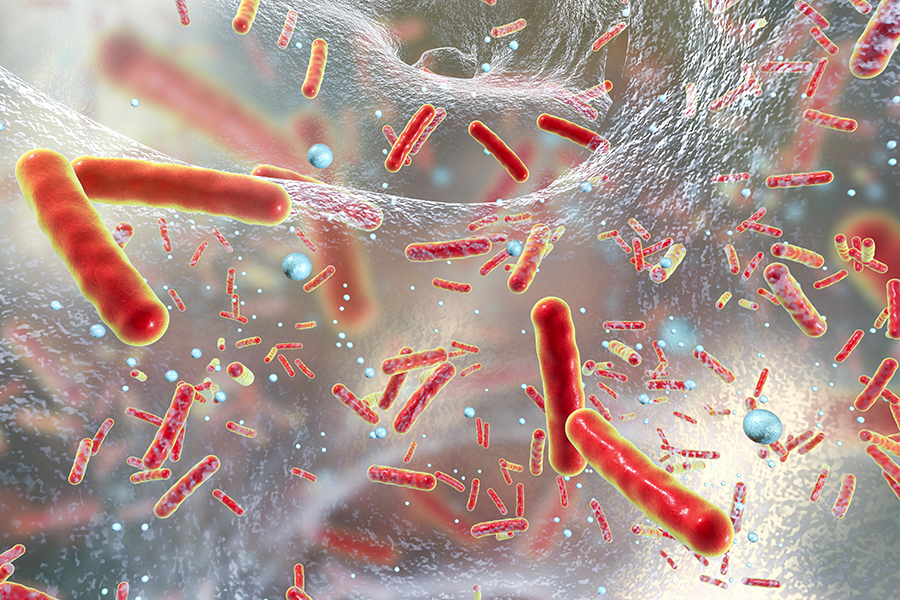
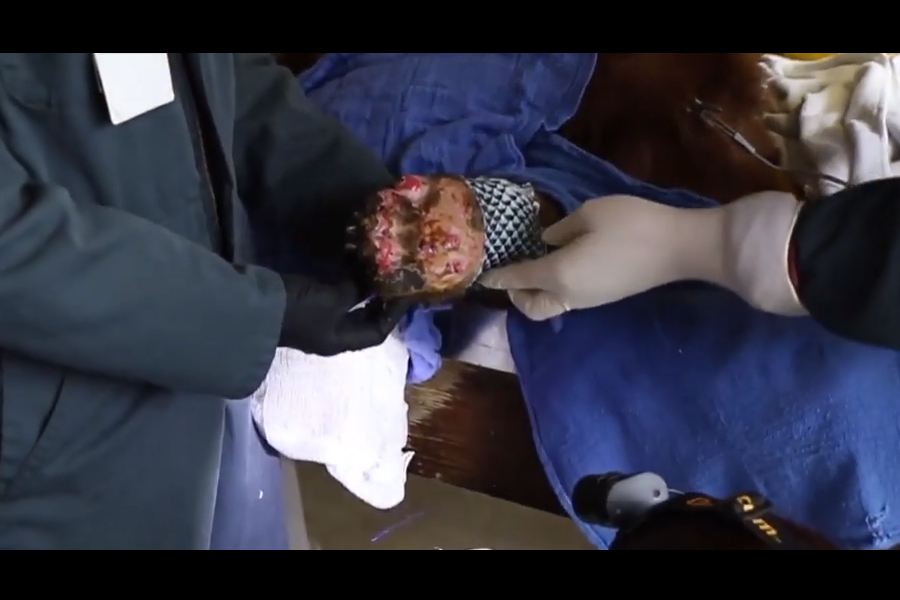
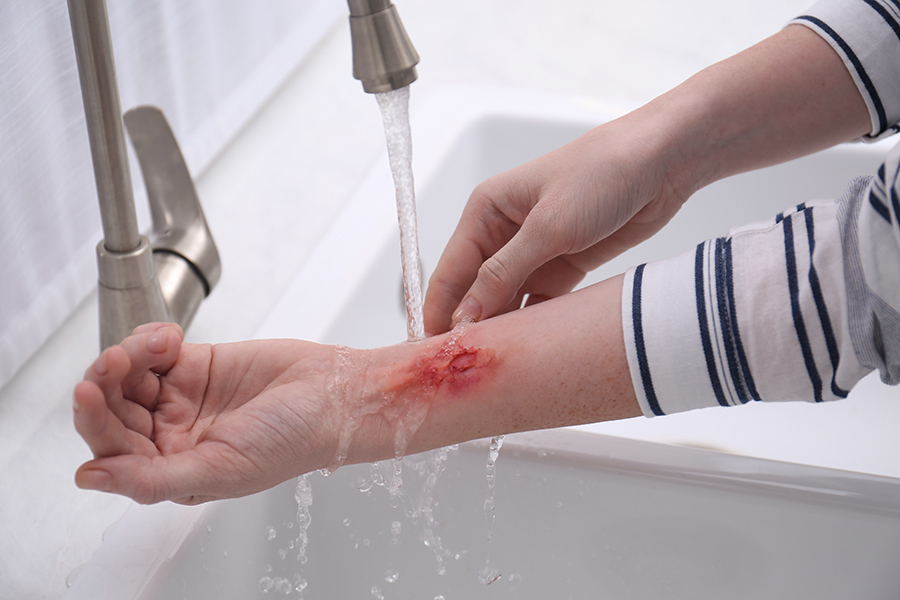
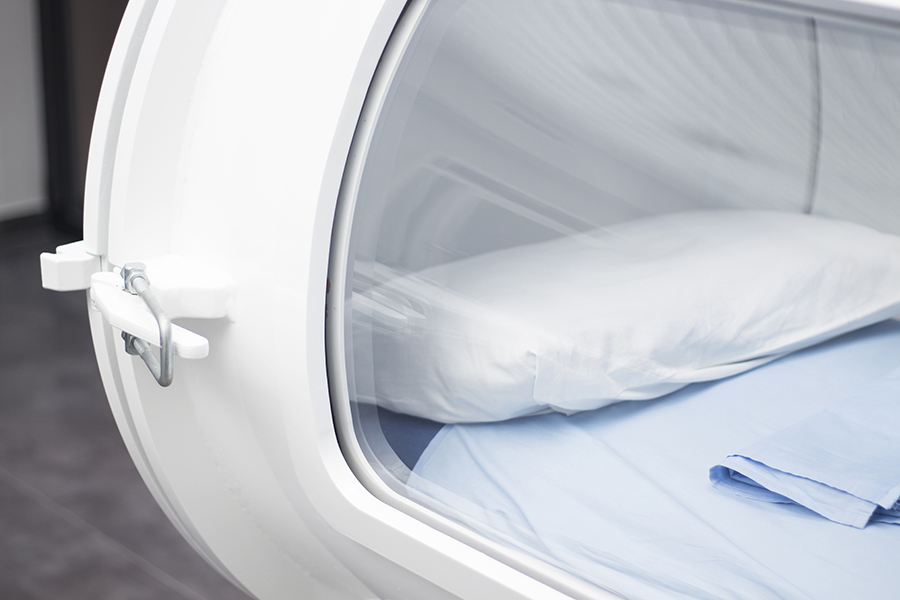
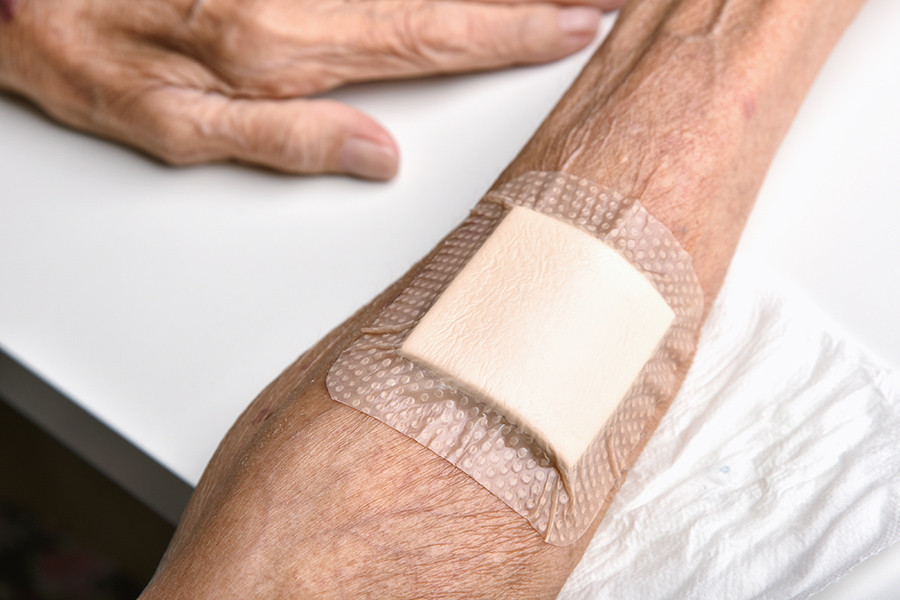
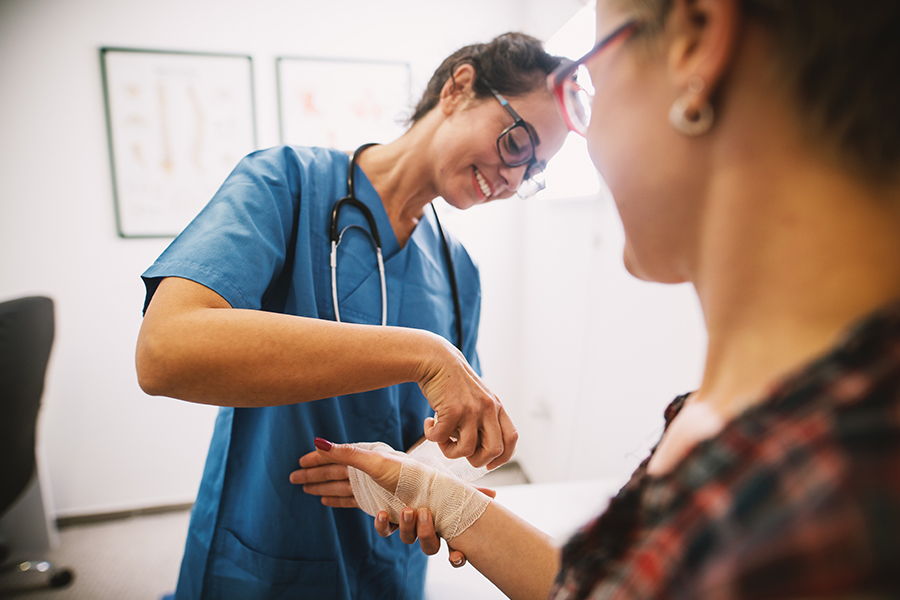
This information is very helpful to me thank a lot .
Great info…healing phases!
That was informative l like that it shows each stage of healing.
Its really helpfull us
its nice and helpful. thanks
[…] Only God can heal. Only God can reconcile. Only God can do the work that we so often want to hurry in and do. We want to fix it or make it all better as soon as possible. But the thing about wounds is…. I don’t know a thing about wounds but I have been hanging out with a lot of medical professionals recently and the thing they tell me about wounds is that sometimes when people come into the hospital they’re too far gone. Sometimes there’s nothing they can do as medical professionals to make it all better. They still try. They still tend to the wound. (*Here’s a chart I found on the internet about the stages of a wound healing). […]
Useful and interesting
As expected many technical terms
Thanks for the explanation
Saturday 06 January 2018
inapendeza sana kazi hii nzur ya vutia kweli
[…] “The healing process is remarkable and complex, and it is also susceptible to interruption due to local and systemic factors…When the right healing environment is established, the body works in wondrous ways to heal and [revitalize itself],” say the medical professionals. […]
This is what I’ve been looking for! Very informative, precise and well articulated. ASANTE SANA
[…] There are four main stages or types of wound healing. What are the four stages of wound healing? This is a basic stages of wound healing timeline: […]
The information is really helpful and well explained. Thank you
[…] There are four main stages or types of wound healing. What are the four stages of wound healing? This is a basic stages of wound healing timeline: […]
[…] part of our classroom time was spent talking about the wound healing process – from inflammatory response and new tissue proliferation to maturation, remodeling, and […]
[…] There are 4 important levels or forms of wound therapeutic. What are the 4 levels of wound therapeutic? This can be a primary levels of wound therapeutic timeline: […]
[…] There are four main stages or types of wound healing. What are the four stages of wound healing? This is a basic stages of wound healing timeline: […]
[…] forms during the healing process and closes and protects the sites of injuries and surgical wounds. One healthcare company puts it like this, “the body works in wondrous ways to heal and replace devitalized […]
Of course it’s helpful to us that we are going to be doctors in some few years to come… thanks
Thank you very much for this highly informative article. It’s exactly what I was looking for!
This article was very educative, fo both learner’s and any other person generally.
Am taking this opportunity to appreciate it highly…
Thanks for the article,it was very educative
This information has been so much helpful to me, it had all the necessary information I needed. Am very much pleased to have visited this website. Thanks very much for helping me with the rightful information.
Information regarding wound healing is really very helpful and need more information regarding auto immune system and topical application impact on wound healing.
The above information is very much beneficial,,,, for I got what I wanted
Thank you very much it is a good information . Thank you
thank you quiet educative information
Some truly interesting details you have written.Aided me a lot, just what I
was searching for :D.
Just a smiling visitor here to share the love
(:, btw great style.